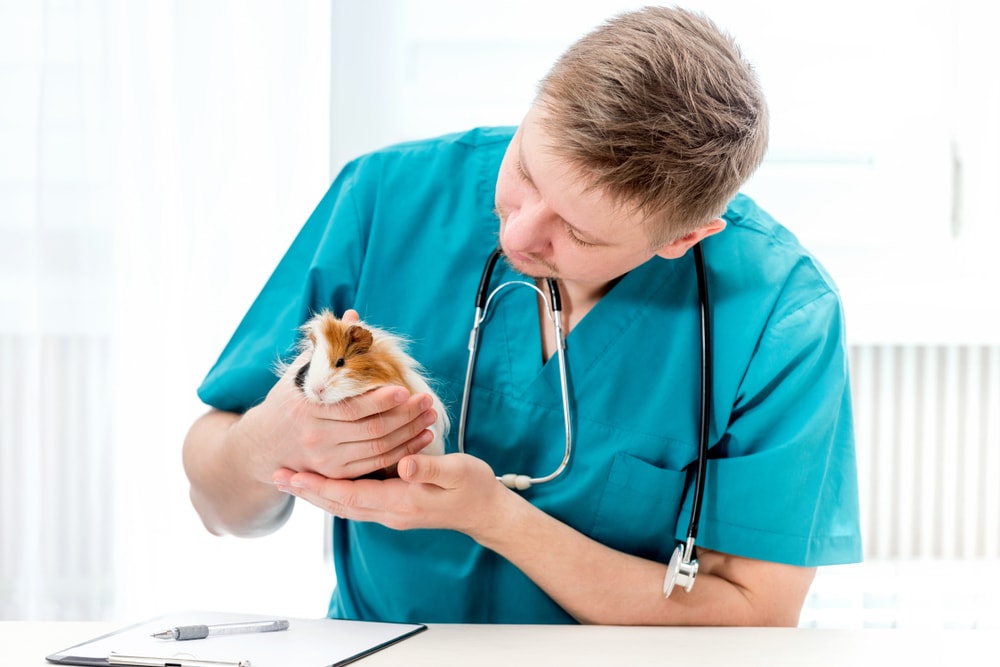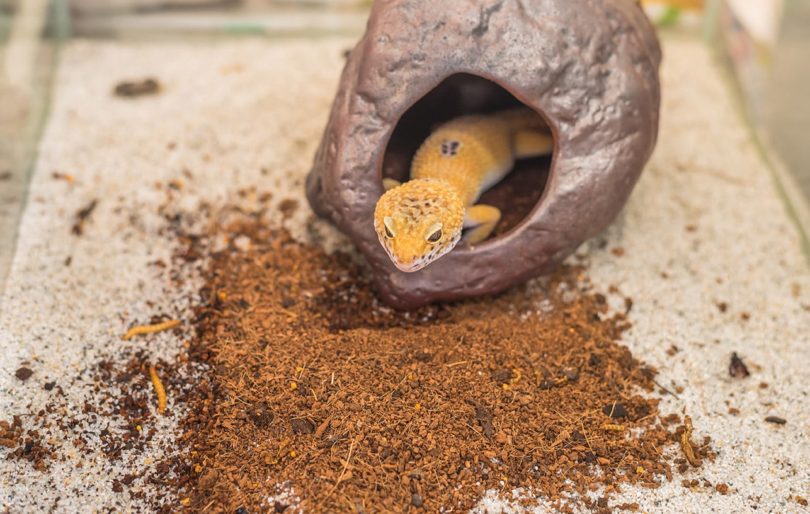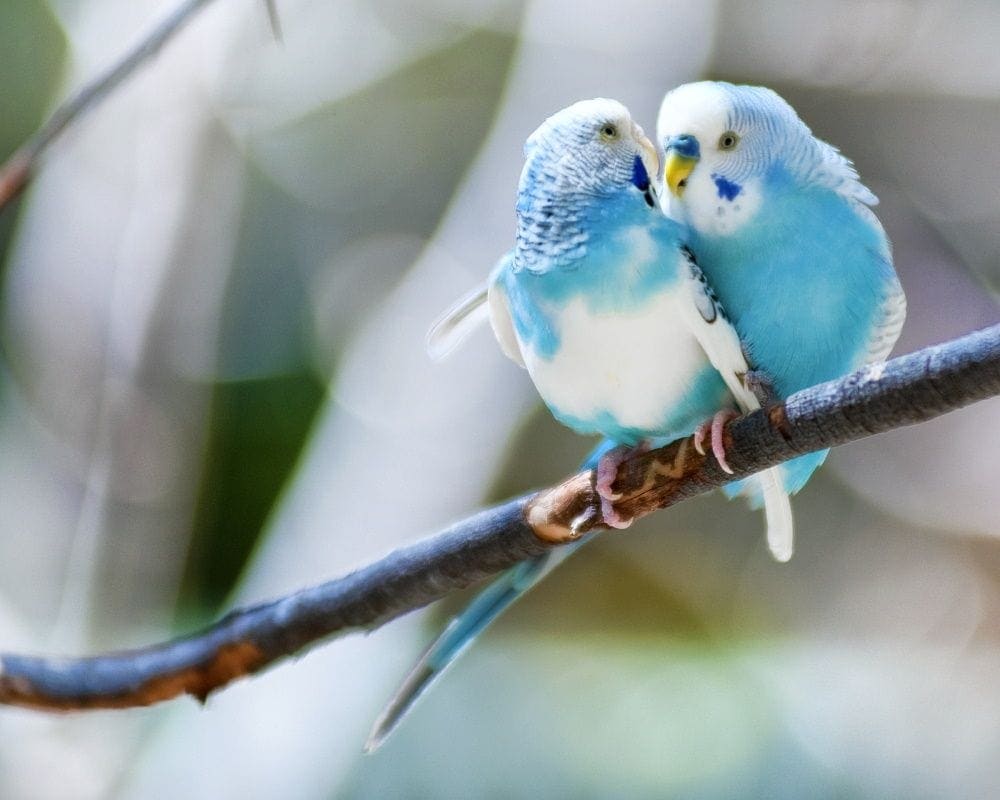VET APPROVED

The information is current and up-to-date in accordance with the latest veterinarian research.
Learn more »Click to Skip Ahead
Hamsters are extremely cute and cuddly with their fluffy hair and distinct color patterns. This is why it can be extremely alarming if you notice your furry friend is losing their fur.
If your hamster starts losing their hair, it’s paramount that you determine why they’re getting bald spots.
Hair loss in hamsters can be a telling sign of several health conditions, ranging from minor to major concerns. In many cases, hair loss is caused by the things found in your pet hamster’s environment. In this article, we discuss the five most common reasons that your hamster is losing hair and what you can do about each one.

The 5 Common Reasons Hamsters Lose Hair
1. Nutritional Deficiencies
One of the most common reasons for hamsters to lose their hair is due to nutritional deficiencies. If your hamster’s diet does not include the proper nutrition—particularly the right amount of B vitamins—it can cause hair loss.
A lack of protein in their diet can also cause problems with their fur. When consulting your veterinarian, one of the first things they’ll ask about is your hamster’s diet.
If this is the suspected cause of your hamster’s hair loss, your veterinarian may recommend changing their diet. Foods like cheese, unsweetened cereal, cooked eggs, whole wheat pasta, and certain fruits and veggies are known to be beneficial in treating hair loss in hamsters. Water-soluble vitamins can also be prescribed to small pets to help hair regrowth.
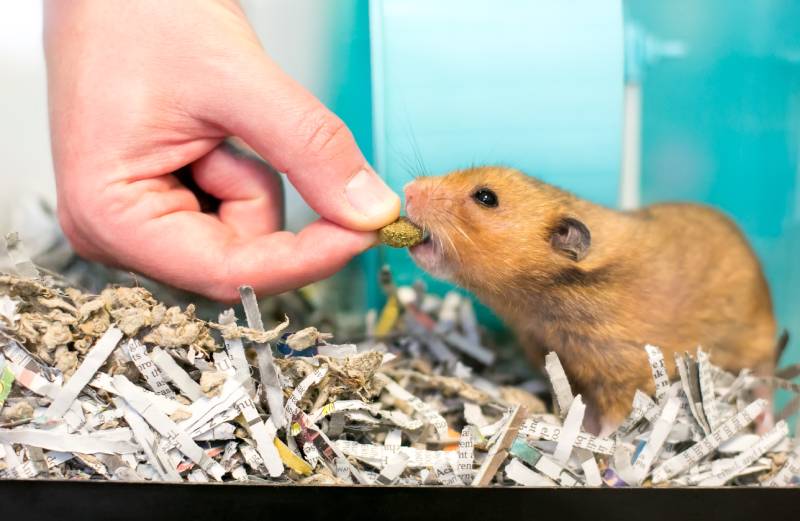
2. Parasites
The presence of parasites can cause a lot of health problems for your hamster, with one of the most common being hair loss. If your hamster has fleas, ringworm, or mites, it can lead to scratching and follicle damage, resulting in hair loss and skin lesions.
If you suspect your pet hamster has parasites, bring them to the vet immediately, and ask for the best solution to help with the problem. Never use any products intended for other animals, as these can be extremely toxic for tiny hamsters.
It’s also important to treat not only your hamster for parasites but also their surroundings and environment. Parasites can infest your pet, their habitat, and your home.
As you clear their environment of the parasites, you should simultaneously start the medication for your pet’s skin. Once your hamster’s skin is healed, their hair will likely grow back just as fluffy as it was before the infestation.
It’s also extremely important to not just treat your hamster for parasites, but also their surroundings and environment.
Parasites not only infest your pet, but they can also infest your hamster’s habitat and your home.
As you clear their environment of the parasites, you should simultaneously start the medication for your pet’s skin. And once your hamster’s skin is healed, their hair will likely grow back just as fluffy as it was before the infestation.
3. Friction
Friction can also cause hair loss in hamsters. If your hamster spends a lot of time rubbing their body against their toys or cage, the excessive friction might cause their hair to fall off. This is particularly common in hamsters with really small cages, as they have very little space to move around.
Make sure you get a large enough cage for your hamster. If you have more than one hamster, it’s all the more important. This way, your hamsters can have enough room to play and run around easily without damaging their coats. Pay attention to the areas where hair loss is occurring, as this will help identify what and where they rub.
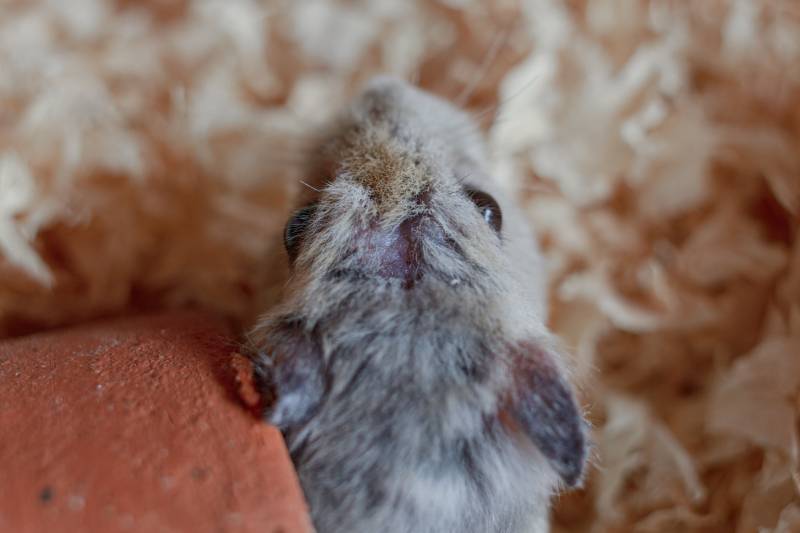
4. Shedding
Yes, hamsters shed regularly. This phenomenon happens most often during the spring and tends to peak during the fall. When hamsters shed, you will notice their fur coat becoming thinner. However, they shouldn’t acquire full-blown bald spots
Certain breeds like Russian and Syrian hamsters tend to shed more than the Roborovski and Chinese dwarf types.
It is completely normal for hamsters to shed. If this is the cause of your pet’s hair loss, don’t worry. After their shedding process, their hair will grow back, and your pet hamster will have their luscious coat once again.
5. Medical Conditions
Some medical conditions and diseases can cause hamsters to lose their fur. Kidney inflammations and T-cell lymphoma are two causes that are commonly associated with hair loss. Another medical condition that often coincides with hair loss in hamsters is hormonal imbalance.
If you notice that your hamster is losing a large amount of hair or is developing bald patches, contact your vet immediately to schedule an appointment. They will assess your hamster’s situation to find out what’s really going on.
Hair loss from medical conditions can be very worrisome, but it can also be a useful indicator that something’s not right.
Hair loss from medical conditions can be very worrisome. However, it’s often a good indicator that something’s not right.
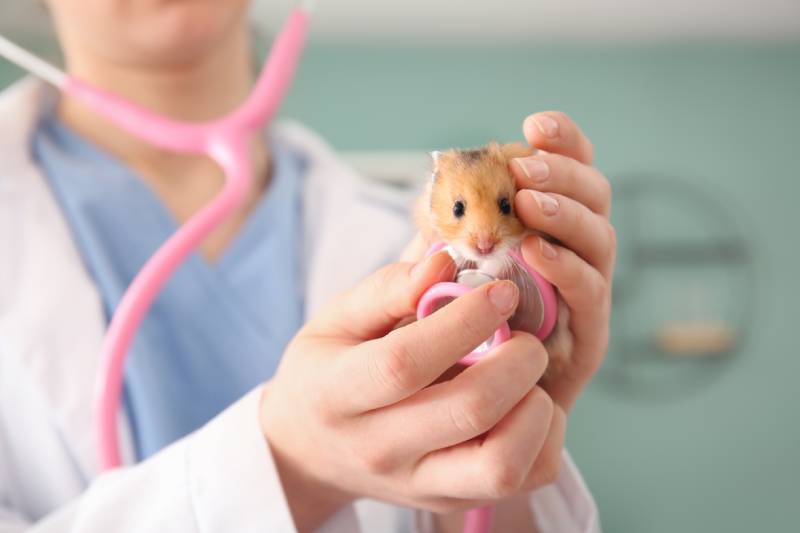

Treating Hamster Hair Loss
Seeing your hamster losing their hair can be quite alarming. But chances are that there is no huge need to worry. Most causes of hamster hair loss are extremely treatable and easily corrected once the underlying problem has been identified.
Working together with your vet, you can give your hamster the best treatment possible. Just be sure to trust your vet and follow their instructions explicitly, and your little hamster will be furry again in no time.
Featured Image Credit: Tatyana Vyc, Shutterstock
